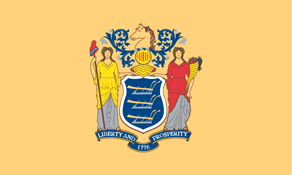New Jersey State Standards for Arts Education: Grade 12

Currently Perma-Bound only has suggested titles for grades K-8 in the Science and Social Studies areas. We are working on expanding this.
NJ.1.1. (Aesthetics) All students will use Aesthetic knowledge in the creation of and in response to Dance, Music, Theater, and Visual Art.
A.1. Knowledge: Formulate responses to fundamental elements within an art form, based on observation, using the domain-specific terminology of that art form.
A.2. Knowledge: Discern the value of works of art, based on historical significance, craftsmanship, cultural context, and originality using appropriate domain specific terminology.
A.3. Knowledge: Determine how historical responses affect the evolution of various artistic styles, trends and movements in art forms from classicism to post-modernism.
B.1. Skills: Compose specific and metaphoric cultural messages in works of art, using contemporary methodologies.
B.2. Skills: Formulate a personal philosophy or individual statement on the meaning(s) of art.
NJ.1.2. (Creation and Performance) All students will utilize those skills, media, methods, and technologies appropriate to each art form in the creation, performance, and presentation of Dance, Music, Theater, and Visual Art.
A.1. Dance: Demonstrate technical proficiency and artistic application of anatomical and kinesthetic principles in performance.
A.2. Dance: Craft dances with themes that have unity of form and content and demonstrate the ability to work alone and in small groups to create dances with coherence and aesthetic unity.
A.3. Dance: Collaborate in the design and production of a dance work.
A.4. Dance: Outline a variety of pathways and the requisite training for careers in dance.
B.1. Music: Sing or play musical works from different genres with expression and technical accuracy.
B.2. Music: Analyze original or prepared musical scores and demonstrate how the elements of music are manipulated.
B.3. Music: Improvise or compose melodies, stylistically appropriate harmonizing parts and rhythmic accompaniments using a chosen system of notation.
B.4. Music: Arrange simple pieces for voices or instruments using a variety of traditional and nontraditional sound sources and electronic media.
B.5. Music: Outline a variety of pathways and the requisite training for careers in music.
C.1. Theater: Create original interpretations of scripted roles demonstrating a range of various appropriate acting styles and methods.
C.2. Theater: Interpret a script by creating a production concept with informed, supported, and sustained directorial choices.
C.3. Theater: Collaborate in the design and production of a theatrical work.
C.4. Theater: Plan and rehearse improvised and scripted scenes.
C.5. Theater: Outline a variety of pathways and the requisite training for careers in theater.
D.1. Visual Art: Interpret themes using symbolism, allegory, or irony through the production of two or three-dimensional art.
D.2. Visual Art: Perform various methods and techniques used in the production of works of art.
D.3. Visual Art: Produce an original body of work in one or more mediums that demonstrates mastery of methods and techniques.
D.4. Visual Art: Outline a variety of pathways and the requisite training for careers in the visual arts.
NJ.1.3. (Elements and Principles) All students will demonstrate an understanding of the elements and principles of Dance, Music, Theater, and Visual Art.
A.1. Dance: Categorize the elements, principles, and choreographic structure of specific dance masterworks.
A.2. Dance: Articulate understanding of choreographic structures or forms such as palindrome, theme and variation, rondo, retrograde, inversion, narrative, and accumulation.
A.3. Dance: Analyze issues of ethnicity, gender, social/economic status, age, and physical conditioning in relation to dance.
B.1. Music: Evaluate a diversity of musical works to discern similarities and differences in how the elements of music have been utilized.
B.2. Music: Synthesize knowledge of the elements of music.
B.3. Music: Identify how the elements of music are utilized in a variety of careers.
C.1. Theater: Describe the process of character analysis and identify physical, emotional, and social dimensions of characters from dramatic texts.
C.2. Theater: Analyze the structural components of plays from a variety of social, historical, and political contexts.
C.3. Theater: Interpret a script to develop a theatrical production concept.
C.4. Theater: Explain the basic physical and chemical properties inherent in components of technical theater such as light, color, pigment, scenic construction, costumes, electricity, paint, and makeup.
D.1. Visual Art: Compare and contrast innovative applications of the elements of art and principles of design.
D.2. Visual Art: Analyze how a literary, musical, theatrical, and/or dance composition can provide inspiration for a work of art.
NJ.1.4. (Critique) All students will develop, apply and reflect upon knowledge of the process of critique.
A.1. Knowledge: Examine the artwork from a variety of historical periods in both western and non-western culture(s).
A.2. Knowledge: Categorize the artistic subject, the formal structure, and the principal elements of art used in exemplary works of art.
A.3. Knowledge: Determine the influence of tradition on arts experience, as an arts creator, performer, and consumer.
B.1. Skills: Develop criteria for evaluating art in a specific domain and use the criteria to evaluate one's personal work and that of their peers, using positive commentary for critique.
B.2. Skills: Provide examples of how critique may affect the creation and/or modification of an existing or new work of art.
NJ.1.5. (History/Culture) All students will understand and analyze the role, development, and continuing influence of the arts in relation to world cultures, history, and society.
A.1. Knowledge: Parallel historical events and artistic development found in dance, music, theater, and visual art.
A.2. Knowledge: Summarize and reflect upon how various art forms and cultural resources preserve cultural heritage and influence contemporary art.
B.1. Skills: Evaluate the impact of innovations in the arts from various historical periods in works of dance, music, theater, and visual art stylistically representative of the times.
B.2. Skills: Compare and contrast the stylistic characteristics of a given historical period through dance, music, theater, and visual art.